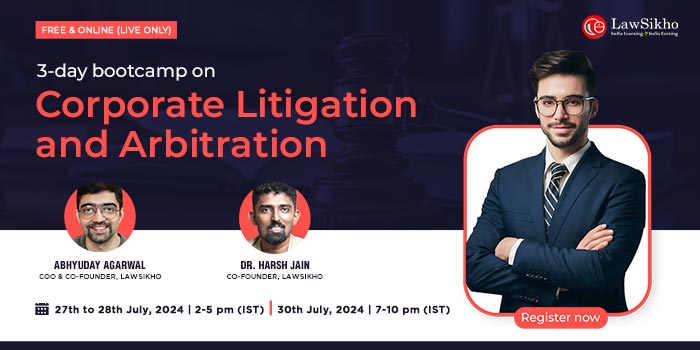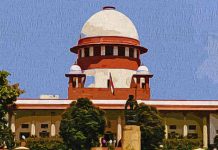Glance and go through the concepts of types of AIBE: Intellectual Property Protection viz. Copyright, Geographical Indicator, Patents, Trademark and Industrial Design with an extensive quiz.
Table of Contents
Copyrights
- Copyright is a branch of intellectual property regime, that protects original works of an author. It is a natural right, and not a statutory right only. This means that a work is protected by copyright as soon as it is created. It need not be granted registration by the State to enjoy copyright protection.
- The governing legislation is Copyright Act, 1957
What constitutes a work for purposes of copyright
Following works are protected under the Copyright Act- (Section 13)
- artistic work including a painting, a sculpture, a drawing (including a diagram, map, chart or plan), an engraving, a photograph, a work of architecture or artistic craftsmanship, dramatic work,
- literary work (including computer programmes, tables, compilations and computer databases), o musical work (including music as well as graphical notation),
- sound recording, and o cinematograph film.
Who is an author?
- In relation to a literary or dramatic work, the author of the work;
- In relation to a musical work, the composer;
- In relation to an artistic work other than a photograph, the artist;
- Relation to a photograph, the person taking the photograph;
- In relation to a cinematograph film or sound recording, the producer; and
- Section 17 holds that author is generally the first owner of copyright, subject to certain exceptions such as in case where the work is produced in the course of employment. Other exceptions are also listed in Section 17.
Rights granted under copyright and Term of copyright protection
- Section 14 lists out the basket of rights that a copyright holder enjoys, inter alia, reproduction, issue copies, translate, perform the work in public, communicate to public and assign. Under Section 14, basket of different rights are granted for different works.
- The owner of the copyright in an existing work or the prospective owner of the copyright in a future work may assign to any person the copyright either wholly or partially and either generally or subject to limitations and either for the whole term of the copyright or any part thereof. (Section 18)
- Section 22 provides that copyright shall subsist in any literary, dramatic, musical or artistic work published within the lifetime of the author until sixty years from the beginning of the calendar year next following the year in which the author dies.
- The author is also granted a moral right in her work under Section 38B. This right subsists with the author even if the copyright is assigned to someone else. It is a right related to copyright, and not a part of thereof.
Offences and Fair use
- Section 51 gives the definition of infringement of copyright. It is infringement if a person does anything, the exclusive right to do which is by the Act conferred upon the owner of the copyright.
- Section 52 gives a long list of activities which will not constitute infringement. These activities fall within the scope of ‘fair use’
Remedies
- The Act provides both civil and criminal remedies to infringement. Chapter XII lays down the rules regarding civil remedies. These include injunction, damages, account of profits etc. If the defendant proves that at the date of the infringement he was not aware and had no reasonable ground for believing that copyright subsisted in the work, the plaintiff shall not be entitled to any remedy other than an injunction in respect of the infringement and a decree for the whole or part of the profits made by the defendant by the sale of the infringing copies as the court may in the circumstances deem reasonable.
- Chapter XIII talks of the criminal offences. It is the criminal offence if a person knowingly infringes or abets the infringement of a copyright or any related right provided for under the Act. Such infringement is punishable with imprisonment for a term which shall not be less than six months but which may extend to three years and with fine which shall not be less than fifty thousand rupees but which may extend to two lakh rupees. (Section 63)
- Section 63A provides for enhanced penalty for second and subsequent convictions.
- Other offences and their relative penalties are also listed in this chapter.
- Section 71 allows for an appeal against the order of the court who tries the suit/complaint about infringement to the court to which appeals from the court making the order ordinarily lie, and such appellate court may direct that execution of the order stay pending disposal of the appeal.
Quiz on Copyrights
1.) Which of the following terms is not defined under the Copyright Act, 1957?
A.) dramatic work
B.) originality
C.) work of sculpture
D.) reprography
2.) What Section of the Copyright Act, 1957 allows for setting up the Copyright Office?
A.) Section 6
B.) Section 8
C.) Section 9
D.) Section 12
3.) In which of the following works does copyright not subsist?
A.) cinematographic film
B.) sound recording, that is part of a cinematographic film
C.) sound recording made as a part of a dramatic work
D.) process of construction in case of work of architecture
4.) Assignment of copyright must compulsorily be in writing
A.) true
B.) True only in case of literary work
C.) Law is unclear
5.) How long does copyright subsists in anonymous and pseudonymous works?
A.) sixty years from the beginning of the calendar year next following the year in which the work is first published
B.) forty years from the beginning of the calendar year next following the year in which the work is first published
C.) twenty years from the beginning of the calendar year next following the year in which the work is first published
D.) None of the above
6.) When can a person apply to the Copyright Board for a licence to produce and publish a translation of a literary or dramatic work in any language?
A.) Anytime
B.) after a period of five years from the first publication of the work
C.) after a period of seven years from the first publication of the work
D.) Never
7.) What Section of the Copyright Act, 1957 mandates registration of Copyright societies?
A.) Section 20
B.) Section 25
C.) Section 28
D.) Section 33
8.) Broadcasters have been accorded a special right for what period of time under the Copyright Act?
A.) 20 years
B.) 25 years
C.) 30 years
D.) 60 years
9.) Performers are granted “performer’s right” under the Copyright Act for what term period?
A.) 30 years
B.) 40 years
C.) 50 years
D.) 60 years
10.) What Chapter of the Copyright Act provides the procedure and provisions regarding appeals?
A.) Chapter XIII
B.) XIV
C.) XV
D.) XVI
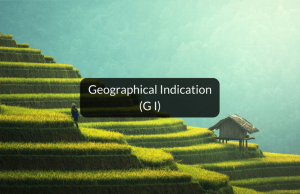
Geographical Indications
What is the governing legislation
- Many goods and services are advertised with the USP that they originate or belong to a certain geographical location. For instance, Tequila is tequila only if it comes from Mexico.
- Such goods, along with their indications are protected within the Intellectual Property Regime via Geographical Indications. The law in India is regulated by Geographical Indications of Goods (Registration and Protection) Act, 1999.
- Definition clause (Section 2) defines “geographical indication”, in relation to goods, as an indication which identifies such goods as agricultural goods, natural goods or manufactured goods as originating, or manufactured in the territory of a country, or a region or locality in that territory, where a given quality, reputation or another characteristic of such goods is essentially attributable to its geographical origin and in case where such goods are manufactured goods one of the activities of either the production or of processing or preparation of the goods concerned takes place in such territory, region or locality, as the case may be.
- The governing authority for GIs is same is that of Trademarks.
Who can apply?
- Any association of persons or producers or any organization or authority established by or under any law for the time being in force representing the interest of the producers of the concerned goods, who are desirous of registering a geographical indication in relation to such goods shall apply in writing to the Registrar in such form and in such manner and accompanied by such fees as may be prescribed for the registration of the geographical indication. (Section 11)
- Section 11 also lays down the application procedure. Section 16 holds that once the procedure specified under Sections 11 to 15 is followed and completed, the Registrar shall, unless the Central Government otherwise directs, register the said geographical indication.
- For an already registered GI, a producer may apply to be registered as an authorised user of the GI (Section 17)
Rights granted under GI
- The registration of a geographical indication shall be for a period of ten years, which can be renewed from time to time (Section 18)
- Like under trademark law, though there is no compulsion to register a GI; registration allows a person to institute any proceeding to prevent, or to recover damages for, the infringement of GI. However, nothing bars a claim of passing off.
- Section 21 confers following rights on a GI holder-
- Right to obtain relief in respect of the infringement of the Geographical Indication.
- Exclusive right to the use of the Geographical Indication in relation to the goods in respect of which Geographical Indication is registered. o Two or more authorised users of a registered Geographical Indication shall have co-equal rights.
- The GI law prohibits assignment, transmission, licensing, pledge, mortgage or any such other agreement in respect of a GI. (Section 24)
- A GI cannot be registered as a trademark.
Offences
- Infringement takes place when a person other than the authorised user uses such GI by any means in the designations or presentation of goods that indicates or suggests that such goods originate in a geographical area other than the true place of origin of such goods in a manner which misleads the persons as to the geographical origin of such goods; or uses any GI in such manner which constitutes an act of unfair competition.
- Chapter VIII gives other offences related to GIs and the respective penalties prescribed.
Remedies
- Both civil and criminal remedies are available under the Act. Chapter VIII deals with the latter. A court not inferior to Metropolitan Magistrate or Judicial Magistrate of the first class shall try an offence under this Act. (Section 50)
- Civil remedies in a suit of infringement or passing off include injunction (subject to such terms, if any, as the court thinks fit) and at the option of the plaintiff, either damages or account of profits, together with or without any order for the delivery-up of the infringing labels and indications for destruction or erasure. (Section 67)
- Criminal penalties are prescribed under Chapter VIII.
- Section 26 imposes a limitation of five years on any action in connection with the use or registration of a trade mark from the date on which such use or registration infringes any geographical indication registered under this Act has become known to the registered proprietor or authorised user registered in respect of such geographical indication under this Act.
- Any person aggrieved by an order or decision of the Registrar may prefer an appeal to the Appellate Board within three months from the date on which the order or decision sought to be appealed against is communicated to such person preferring the appeal. (Section 31)
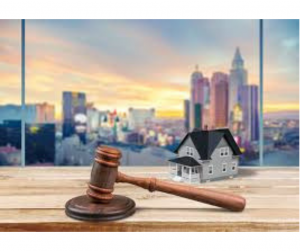
Industrial Design
Meaning and governing legislation
- Industrial Design protection is provided for a shape, configuration, surface pattern, colour, or line (or a combination of these), which, when applied to a functional article, produces or increases aesthetics, and improves the visual appearance of the design, be it a two-dimensional or a three-dimensional article.
- The governing legislation in India is Designs Act, 2000.
- The Act defines “design” to mean only the features of shape, configuration, pattern, ornament or composition of lines or colours applied to any article whether in two dimensional or three dimensional or in both forms, by any industrial process or means, whether manual, mechanical or chemical, separate or combined, which in the finished article appeal to and are judged solely by the eye; but does not include any mode or principle of construction or anything which is in substance a mere mechanical device, and does not include any trade mark as defined in clause (v) of sub-section (1) of section 2 of the Trade and Merchandise Marks Act, 1958 or property mark as defined in section 479 of the Indian Penal Code or any artistic work as defined in clause (c) of section 2 of the Copyright Act, 1957.
- Section 4 prohibits registration of a design that is not original, has been disclosed public anywhere, is similar to an existing design or contains obscene matter.
Who can apply?
- Section 5 entails that a proprietor must apply for registration of a new design. As per Section 2 (j), a proprietor means- (i) where the author of the design, for good consideration, executes the work for
some other person, means the person for whom the design is so executed; (ii) where any person acquires the design or the right to apply the design to any article, either exclusively of any other person or otherwise, means, in the respect and to the extent in and to which the design or right has been so acquired, the person by whom the design or right is so acquired; and (iii) in any other case, means the author of the design; and where the property in or the right to apply, the design has devolved from the original proprietor upon any other person, includes that other person.
Design and Copyright
- Section 15(1) of the Copyright Act explicitly prohibits copyright protection if a design is registered under the Design Act. Further, Section 15 (2) states that, if a design is capable of being registered under the Designs Act but the same has not been registered, such design will cease to have copyright protection as soon as an article to which such design is applied is reproduced more than 50 times by an industrial process.
- Section 2(d) of The Designs Act excludes any artistic work as defined in Section 2(c) of the Copyright Act from the definition of ‘design’ under the Designs Act.
- Hence, if a work is an artistic work under the copyright law, it cannot have any protection under the Designs Act, and if a work is eligible of being registered under the Designs Act, then that work will cease to have copyright protection as soon as an article with such work is produced more than 50 times.
Rights granted
- When a design is registered, the registered proprietor of the design shall have protection in the design for ten years from the date of registration, which may be extended for five more years on expiration. (Section 11)
- The protection under Design Act is granted in the form of copyright over the design. Section 2 defines copyright as an exclusive right to apply a design to any article in any class in which the design is registered.
- The proprietor of a registered design will have the same rights against the government as a patent holder. (Section 20)
- The provisions of the Patents Act, 1970 with regard to certificates of the validity of a patent, and to the remedy in case of groundless threats of legal proceedings by a patentee shall apply in the case of registered designs in like manner as they apply in the case of patents. (Section 23).
Offences and Remedies
- Chapter V of the Act talks of legal proceedings. One such proceeding is for piracy of copyright in the design, which as defined by Section 22 includes applying design to any article for the purpose of sale, or importation of the article by any person other than the proprietor, or knowingly publish a fraudulent imitation of the design.
- Reliefs include a fine of up to Rs. 25,000, damages and injunction. The total sum of recoverable cannot exceed Rs.50,000.
Quiz on Industrial design
1.) A design that has been published in any other country can be registered under Designs Act, 2000-
A.) true
B.) True only for well-known designs
C.) Can’t say
D) No
2.) Who decides a question that arises with respect to what class an article would fall under (as under Designs Act, 2000)?
A.) Controller
B.) Registrar of Trademarks
C.) Registrar of Patents
D.) Intellectual Property Appellate Board
3.) The period of protection under Design Act can be extended by how many years after the expiration of the original period?
A.) Two years
B.) Five years
C.) Seven years
D.) Ten years
4.) What section of the Designs Act, 2000 allows a person to request information as to existence of copyright in an article?
A.) Section 14
B.) Section 15
C.) Section 18
D.) Section 25
5.) Where does an appeal against the decision of Controller to cancel the registration of a design under Design Act, lie?
A.) District Court
B.) High Court
C.) Intellectual Property Appellate Board
D.) None of the above
6.) In what court can a proceeding under Section 22 be instituted?
A.) a court not below District Court
B.) a court not below High Court
C.) Intellectual Property Appellate Board
D.) None of the above
7.) What section lays down grounds for cancellation of registration of a design under the Design Act, 2000?
A.) Section 15
B.) Section 17
C.) Section 19
D.) Section 22
8.) Where can the Controller apply in any case of doubt or difficulty arising in the administration of any of the provisions of the Designs Act, 2000?
A.) Intellectual Property Appellate Board
B.) Registrar of Trademarks
C.) Central Government
D.) None of the above
9.) What is the maximum number of classes a design may be registered under (under the Designs Act, 2000)?
A.) 1
B.) 2
C.) 3
D.) 4
10.) What section of the Designs Act, 2000 entails provisions regarding piracy of a registered design?
A.) Section 15
B.) Section 17
C.) Section 19
D.) Section 22
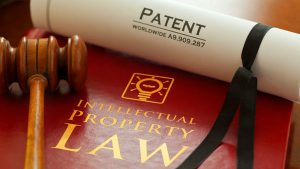
Patents
- Patents is a system of intellectual property protection that seeks to protect an invention. The governing legislation in India is Patent Act, 1970, which was amended significantly in 2005.
- The Act is divided into 23 chapters, and has 163 sections. Chapter I and II give the basic provisions as to patentability of inventions.
What is an invention?
- The Act lays down the pre-requisites of an invention under the definitional clause, Section 2 (j)- invention means a new product or process involving an inventive step and capable of industrial application. Thus, three requirements are set out here- new product, inventive step and industrial application. The three pre-requisites are defined under Section 2.
- The Act, instead of listing out an inclusive lists for inventions that qualify as an invention; has a negative list under Section 3. Section 3 lays down all that is not patentable. The list includes, but is not limited to, computer software, plant and seeds variety, traditional knowledge, method of agriculture and anything contrary to established natural laws.
Who may apply?
- Section 6 provides that the inventor may make an application, either alone or jointly with another, or his/their assignee or legal representative of any deceased inventor or his assignee.
- Chapter III and IV lay down the procedural requirements- the form of application, its contents and relevant dates, powers of Controller and the procedure to be followed while deciding an application.
Rights granted under Patent law and Term of Patent Law
- Section 48 grants exclusive rights a patentee to prevent others from making, using, offering for sale, selling or importing for those purposes that product in India; or in case the subject matter of the patent is a process, the exclusive right to prevent third parties, who do not have his consent, from the act of using that process, offering for sale, selling or importing for those purposes the product obtained directly by that process in India.
- Section 117A provides for appeals to the Appellate Board. Sub-section (1) of section 117A makes it clear that no appeal will lie from any orders apart from those mentioned under sub-section (2) of section 117A.
- Section 53 provides that the term of a patent shall be twenty years from the date of filing of the application for the patent.
Offences Related to Patents
- Chapter XX of the Act deals with various offences related to patent. These include, but are not limited to contravention of secrecy provisions laid down Section 35, falsification of entries in the register, unauthorized claim over patents, and infringing any right of the patentee. A suit for infringement cannot be instituted until the patent application is published (Section 45). Chapter XX lists out the penalties for the various offences.
Compulsory licensing
- Section 84 to 94 relate to compulsory licensing of patented products. A person may apply for a compulsory license three years after the grant of a patent if the reasonable requirements of the patent to the public have not been met, or the invention is not available at a reasonable price, or if the invention has not worked in India. Compulsory license may also be granted on notification by Central Government on exceptional circumstances related to public interest namely national emergency, extreme urgency example scarcity of petroleum products, earthquake etc, and public non-commercial use.
Quiz on Patents
1.) Which of the following invention is patentable?
A.) inventions relating to atomic energy
B.) topography of integrated circuits
C.) computer programme
D.) micro-organisms
2.) What section of the Patents Act entails provisions for publication of patent applications?
A.) Section 11
B.) Section 11A
C.) Section 12
D.) Section 14
3.) Which of the following ground is not a valid ground for opposing a patent application under the Patents Act?
A.) that the applicant for the patent or the person under or through whom he claims, wrongfully obtained the invention or any part thereof from him or from a person under or through whom he claims
B.) that the subject of any claim of the complete specification is not an invention within the meaning of this Act, or is not patentable under this Act
C.) that the complete specification does not disclose or wrongly mentions the source or geographical origin of biological material used for the invention
D.) that the applicant is not a scientist of reputable standing
4.) At what intervals will secrecy directions for inventions relevant for defence purposes be undertaken under the Patents Act?
A.) Six months
B.) Eight months
C.) Twelve months
D.) Twenty months
5.) Which of the following is a not pre-requisite for applying for patents outside India under the Patents Act?
A.) Written permit required from Controller
B.) Invention should not be relevant to defence purposes or atomic energy
C.) Invention should not be relevant to cause of poverty in India
D.) an application for a patent for the same invention should have been made in India, not less than six weeks before the application outside India
6.) What is the consequence of applying a patent outside India without fulfilling the requirements under Section 39 of the Patents Act?
A.) Imprisonment of upto one year
B.) Fine of upto 1 lakh rupees
C.) Revocation of patent
D.) Both (1) and (2)
7.) What date is provided to the patent, once it is granted?
A.) Date the patent is granted
B.) date on which the application for patent was filed
C.) Date the application was published
D.) Date the application was made aware of the grant of patent
8.) What section of the Patents Act lays down the rights granted to patentees?
A.) Section 30
B.) Section 35
C.) Section 40
D.) Section 48
9.) How are rights divided between co-owners of a patent?
A.) Both have an equal undivided share
B.) The person who played a larger role in the invention will get a larger share
C.) The poorer person gets the larger share
D.) The person
10.) Commission received by a Director from a company is salary, to be chargeable under the head ‘Income from Salaries’ under the Income Tax Act-
A.) True, only if the director is an employee of the Company
B.) True, only if the salary is above 40 lakhs

Trademarks
- Trademarks law governs and protects distinguishing marks which can distinguish goods and services of one trader from those of another. Indian law of trademarks is governed by Trademarks Act, 1999.
- As per Section 2 (zb), “trade mark” means a mark capable of being represented graphically and which is capable of distinguishing the goods or services of one person from those of others and may include shape of goods, their packaging and combination of colours.
- “mark” is defined to include a device, brand, heading, label, ticket, name, signature, word, letter, numeral, shape of goods, packaging or combination of colours or any combination thereof. (Section 2(m))
- Section 7 of the Act lays down provisions regarding Classification of Goods and Services and provides that the Registrar shall classify goods and services in accordance to the International Classification of Goods and Services for the purpose of registration of trademark. Hence, the Trademark Registry has classified the goods and services in accordance with 10th edition of Nice Classification of Goods and Services.
Grant of Trademark
- Any person claiming to be the proprietor of a trade mark used or proposed to be used by him, who is desirous of registering it, may apply for its registration by an application in writing to the Registrar. (Section 18)
- Section 9 entails provisions for an absolute refusal of registration of trademarks. Thus, trademarks that are devoid of any distinctive character, that is to say, not capable of distinguishing the goods or services of one person from those of another person or which consist exclusively of marks or indications which may serve in trade to designate the kind, quality, quantity, intended purpose, values, geographical origin or the time of production of the goods or rendering of the service or other characteristics of the goods or service, are not registrable.
- In contrast to above, Section 11 lays down relative grounds for refusal of registration of trademarks. These include factors such as if the applied for trademark resembles an existing one, or if its use is limited because of an existing copyright, if another sign is a well-known trademark.
- Once the application is made and the procedure completed as prescribed under Chapter III of the Act, the Registrar will register the trademark unless Central Government directs otherwise. (Section 23)
Rights granted
- A trademark once registered, enjoys protection for ten years, which can be renewed upon expiration. (Section 25)
- Registration of trademark allows a person to institute proceedings to recover damages for infringement of trademark. Without registration, only a suit for passing off can be instituted.
Offences and Remedies
- A registered trademark is infringed by a person who, not being a registered proprietor or a person using by way of permitted use, uses in the course of trade, a mark which is identical with, or deceptively similar to, the trade mark in relation to goods or services in respect of which the trade mark is registered and in such manner as to render the use of the mark likely to be taken as being used as a trade mark. (Section 29)
- The Act contains provisions for setting up the Intellectual Property Appellate Board. Any person aggrieved by an order or decision of the Registrar under this Act, or the rules made thereunder may prefer an appeal to the Appellate Board within three months from the date on which the order or decision sought to be appealed against is communicated to such person preferring the appeal. (Section 91)
- Chapter XII lists out the penalties for various offences related to trademarks.
Quiz on Trademarks
1.) How long does trademark protection last?
A.) 20
B.) 60
C.) Perpetuity
D.) 10 years and renewal upon expiration
2.) What must a plaintiff prove in a successful trademark infringement case?
A.) Defendant infringed plaintiff’s mark
B.) Defendant used the mark in an unauthorized manner
C.) The use of the mark is likely to cause confusion or deception of the public as to the origin
D.) All of the above
3.) What does Trademark law seek to protect?
A.) Words, symbols, devices that differentiate goods or services from one another
B.) Only brand names
C.) Names of specific people and processes
D.) Inventions that posit some kind of utility function
4.) St. Ives Laboratories produces beauty products under the mark, “St. Ives”. Another cosmetic company starts to produce similar products with the mark, “Mt. Ives” attached to it. As a judge, what should be the outcome of this dispute, as decided with reference to the Trademark law in India?
A.) It should be allowed since the first words of the marks are distinctly different
B.) It should be disallowed due to the phonetic and conceptual similarity between the two marks
C.) It should be allowed because the consumer may be able to spot the difference
D.) None of the above
5.) Under Indian legal framework, a trademark can be claimed by-
A.) The person who uses a trademark through the TM symbol
B.) The person who first registers a trademark with the Trademark Office
C.) The person who first uses a trademark
D.) None of the above
6.) Trademark must be registered in order to be protected
A.) true
B.) True, but only for international trademarks
C.) The position is unclear under the law
7.) A permitted user of the trademark, as defined under (2) (1) (r) (ii) of the Trademarks Act has no right to institute proceedings for infringement of trademark-
A.) True, if he is also the registered user
B.) True, if the permitted user has violated any condition of use of the trademark
https://www.lawsikho.com/mock_tests/14261/question_paper 1/8
11/6/2017 LawSikho
C.) True. This is what the Trademarks Act explicitly provides for
8.) As per the Trademarks Act, 1999, the Chairman of the Intellectual Property Appellate Board must possess what qualifications?
A.) She is, or has been Judge of a High Court
B.) She has, for two years, held the office of Vice-Chairman
C.) Either (1) or (2)
D.) None of the above
9.) What is the prescribed period of imprisonment provided under Trademarks Act, 1999 for falsely representing a trademark as registered?
A.) Maximum 2 years
B.) Maximum 3 years
C.) Maximum 4 years
D.) None of the above
10.) What is the prescribed period of imprisonment provided under Trademarks Act, 1999 for falsification of entries in the Register?
A.) Maximum 2 years
B.) Maximum 3 years
C.) Maximum 4 years
D.) None of the above
11.) Which of the following is not a kind of work protected by the copyright regime in India?
A.) A software
B.) Name of a company
C.) Notes in a symphony
D.) a work of architechture
12.) Which of these is a condition required to be satisfied by a work in order to be copyrightable in India?
A.) usefulness
B.) originality
C.) literary worth
D.) profitability
13.) As per The Copyright Act, 1957, a copyright cannot subsist in any work which is registered under –
A.) The Patents Act, 1970
B.) The Designs Act, 2000
C.) The Trademarks Act, 1999
D.) Different IPRs cannot co-exist for the same subject-matter in India
14.) What is the duration of a copyright protection in the Indian system?
A.) Lifetime of the author + 20 years
B.) 20 years
C.) Lifetime of the author + 60 years
D.) 60 years
15.) Which of the following does not qualify as a ‘fair use’ of the copyrighted work as per Section 52 of The Copyright Act, 1957?
A.) reproduction in a magazine of an article on a current political topic whose author has author has expressly reserved the right of reproduction to himself
https://www.lawsikho.com/mock_tests/14261/question_paper 2/8
11/6/2017 LawSikho
B.) performance of a dramatic work by an amateur club for the benefit of a religious institution
C.) causing a sound recording to be played in public for the non-profitable activities of a club
D.) None of the above
16.) Which of the following categories of work does not require any fulfilment of the requirement of ‘originality’ to be copyrightable as per The Copyright Act, 1957?A.) artistic work
B.) dramatic work
C.) cinematographic films
D.) musical work
17.) Does The Copyright Act, 1957 prescribe any remedy for the author who has already wholly assigned his copyright in a work if that work is later mutilated by the assignee herself?
A.) Yes, for all works
B.) Yes, but only for artistic work
C.) Yes, but only for literary work
D.) No
18.) Would making an exact drawing of a 3-D copyrighted work would be considered copyright infringement?
A.) Yes, but only if the author has registered his copyright
B.) Yes, but only if the work benefits public
C.) Yes, in all situations
D.) No
19.) Author is the always the first owner of copyright
A.) True, in all circumstances
B.) True, unless the author is dead
C.) True, subject to the exceptions provided under the Copyright Act
20.) What section of the Copyright Act, 1957 lays down the list of criminal offences related to copyright?
A.) Section 60
B.) Section 63
C.) Section 64
D.) None of the above
21.) Which of the following would not come under the definition of industrial design?
A.) Sketch of a new garment by a fashion designer
B.) Exhaust Pipes of cars based on a specific model
C.) Special buttons for a specific line of designer wear
D.) Posters made for sale in a chain of pop culture stores
22.) Which among the following is an essential for registering an industrial design?
A.) Originality of idea
B.) Design can be similar to another design from the same author, as long as there is a small perceptible difference in the two
C.) Novelty
D.) Both (1) and (3)
23.) Protection under the Designs Act is given for a duration of
A.) 10 years from the date of registration extendable for another term of 5 years
B.) 15 years from the date of registration extendable for another term of 7 years
C.) 10 years from the date of registration extendable for another term of 10 years
D.) 20 years from the date of registration extendable for another term of 5 years
24.) An industrial design is concerned only with the ornamental or aesthetic aspects of a product and not its function or performance
A.) true
B.) True, in case of international products
C.) Law is unclear on the topic
25.) Securing an IMark from the India Design Council is a prerequisite to registration of a design under the Designs Act 2000
A.) true
B.) True, in case of specified products
C.) Law is unclear on the topic
26.) What provision of the Design Act, 2000 defines a ‘design’?
A.) Section 2(b)
B.) Section 2 (d)
C.) Section 3
D.) Section 4
27.) Which of the following are not permitted to apply for registration of a design under the Design Act, 2000?
A.) A person who has acquired the design
B.) a person for whom the design has been developed by the author
C.) a person on whom the design has devolved
D.) A person who inspired the design
28.) It is mandatory to have a prototype before applying for registration of the design under the Design Act, 2000
A.) Yes, in all cases
B.) Yes, but only in case of a design which benefits public
C.) No
D.) Law is unclear on the topic
29.) What is the maximum period allowed for removal of objections after filing of application for registration of design under Design Act?
A.) Six months
B.) Six months, that can be extended for a further period not exceeding three months provided a request in Form-18 is filed before the expiry of initial six months
C.) Eight months
D.) Eight months, that can be extended for a further period not exceeding three months provided a request in Form-18 is filed before the expiry of initial six months
30.) Who grants the registration of design under Design Act?
A.) Office for Industrial Designs
B.) Patent Office
C.) Intellectual Property Board
D.) None of the above
31.) Which of the following may have GIs?
A.) Agricultural products, food stuffs, wine and spirit drinks
B.) Handicrafts
C.) Industrial products
D.) All of the above
32.) The rights arising from a GI are-
A.) The rights-holder can prevent the use of the GI by a third party whose product doesn’t conform to the applicable standards.
B.) The rights-holder can prevent a third party from using the same techniques as those set out in the standards for that indication.
C.) Both
D.) Neither
33.) In India, registration of GIs for protection is-
A.) Mandatory
B.) Not mandatory because an unregistered GI can also be enforced by initiating an action of passing off against the infringing party.
C.) No such provision exists since there is no sui generis system of protection.
D.) None of the above
34.) The sale of tea under the brand name ‘Darjeeling Lounge Specials’ may constitute an infringement under the Geographical Indications of Goods (Registration and Protection) Act, 1999
A.) true
B.) True, only if the brand symbol is similar to an existing one
C.) The position is unclear under the law
35.) Can an action be instituted to recover damages for infringement of an unregistered GI under Geographical Indications of Goods (Registration and Protection) Act, 1999?
A.) Yes, but only if it is a registered trademark
B.) Yes, but only if the action is bona fide
C.) No
D.) The position is unclear under the law
36.) A registered trademark in the usual course can be simultaneously registered as a geographical indication (‘GI’)
A.) true
B.) True, if the trademark benefits the public
C.) Can’t say
37.) It is infringement of GI if another mark is used in a manner that constitutes an act of unfair competition including passing off in respect of registered geographical indication.
A.) No, it would be an offence only under Competition Act
B.) No, it would be an offence only under Trademarks Act
C.) Yes
D.) Can’t say
38.) A right in a registered GI cannot be-
A.) assigned
B.) licensed
C.) mortgaged
D.) All of the above
39.) What happens to the rights in a registered GI on death of its auhorised user?
A.) The GI is dissolved. No one owns the GI
B.) The right goes to the State
C.) The right shall devolve upon the successor of the authorised user
D.) It will be decided by the Trademarks Office
40.) What is the maximum period within which an aggrieved person can file an appeal against the decision of the Registrar under the Geographical Indications of Goods (Registration and Protection) Act, 1999?
A.) Three months
B.) Three months, unless sufficient cause to extend this
C.) Four months
D.) Four months, unless sufficient cause to extend this
41.) Which of the following qualifies as non-patentable subject-matter in India?
A.) inventions relating to atomic energy
B.) methods of agriculture or horticulture
C.) mere scheme or rule or method of playing games
D.) all of these
42.) Which of the following constitutes one of the ingredients of “invention” as per The Patents Act, 1970?
A.) literary advancement
B.) furtherance of public interest
C.) industrial application
D.) both (b) and (c)
43.) Which of these is not a condition required to be satisfied by an invention in order to be patentable?
A.) novelty
B.) non-obviousness
C.) profitability
D.) usefulness
44.) Which of the following has not been expressly categorised as non-patentable by The Patents Act, 1970?
A.) mathematical or business method or a computer program per se algorithms
B.) any process for medicinal or surgical treatment of human beings to render them free of disease
C.) any process of manufacturing of any pharmaceutical products for human beings
D.) a literary, dramatic, musical or artistic work including cinematographic works and television productions
45.) What is the duration of a patent in the Indian system?
A.) 60 years
B.) 10 years
C.) 25 years
D.) 20 years
46.) According to the semantics used in The Patents Act, 1970, a patent protects –
A.) an idea
B.) an expression
C.) an invention
D.) a discovery (of naturally-occurring substances)
47.) Does The Patents Act, 1970 contain any provision to facilitate access to medicines that are protected by a patent?
A.) Yes, only after patent is atleast 5 years old
B.) Yes, only after the patent holder has made profits of at least 50 lakhs on account of the patent
C.) Yes, government can acquire any patent for public purposes
D.) No
48.) Which of the following is patentable under the Indian laws?
A.) A new drug that removes one side effect of the older one
B.) A terminator gene technology
C.) Method of learning a language
D.) A vaccine
49.) What court has the jurisdiction to make a declaration as to non-infringement of a patent?
A.) A court not inferior to a district court having the jurisdiction
B.) A court not inferior to a High Court having the jurisdiction
C.) Intellectual Property Appellate Board
D.) None of the above
50.) What is maximum prescribed period of imprisonment for falsification of entries in the Register under the Patents Act, 1970?
A.) 2 months
B.) 3 months
C.) 4 months
D.) 5 months
Answer Key of Quiz to Trademarks
1.) D 2.) D 3.) A 4.) B 5.) B 6.) 7.) C 8.) C 9.) B 10.) A 11.) B 12.) B 13.) B 14.) C 15.) A 16.) C 17.) A 18.) C 19.) C 20.) B 21.) A 22.) D 23.) A 24.) A 25.) 26.) B 27.) D 28.) C 29.) B 30.) B 31.) D 32.) A 33.) B 34.) A 35.) C 36.) 37.) C 38.) D 39.) C 40.) B 41.) D 42.) C 43.) C 44.) C 45.) D 46.) C 47.) C 48.) D 49.) A 50.) A
Find the ultimate guide to constitutional provisions for All India Bar Exam here.





